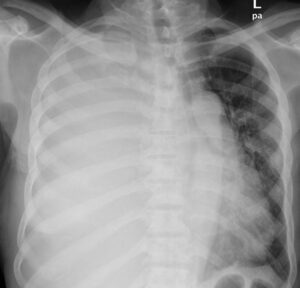Five weeks after uneventful coronary-artery bypass grafting, an 81-year-old woman presented to the hospital with a serum creatinine level of 493 μmol per liter (5.6 mg per deciliter).
Her kidney function had remained stable throughout her hospital stay for the surgery, and her serum creatinine level on discharge had been 106 μmol per liter (1.2 mg per deciliter), with an estimated glomerular filtration rate of 46 ml per minute per 1.73 m2 of body-surface area.
Physical examination of her legs and feet now revealed extensive livedo reticularis and cyanosis of the toes.
A differential blood count was normal, tests for antineutrophilic antibodies and cryoglobulins were negative, complement levels were normal, and the results of urinalysis and renal ultrasonography were unremarkable.
Examination of a specimen from a percutaneous kidney biopsy revealed obstructive cholesterol crystals within an arcuate artery, confirming a diagnosis of cholesterol emboli syndrome.
It is likely that atheromatous plaques were disrupted at the time of angiographic or surgical arterial manipulation several weeks before the patient’s presentation, resulting in progressive subacute renal dysfunction, livedo reticularis, and digital cyanosis.

